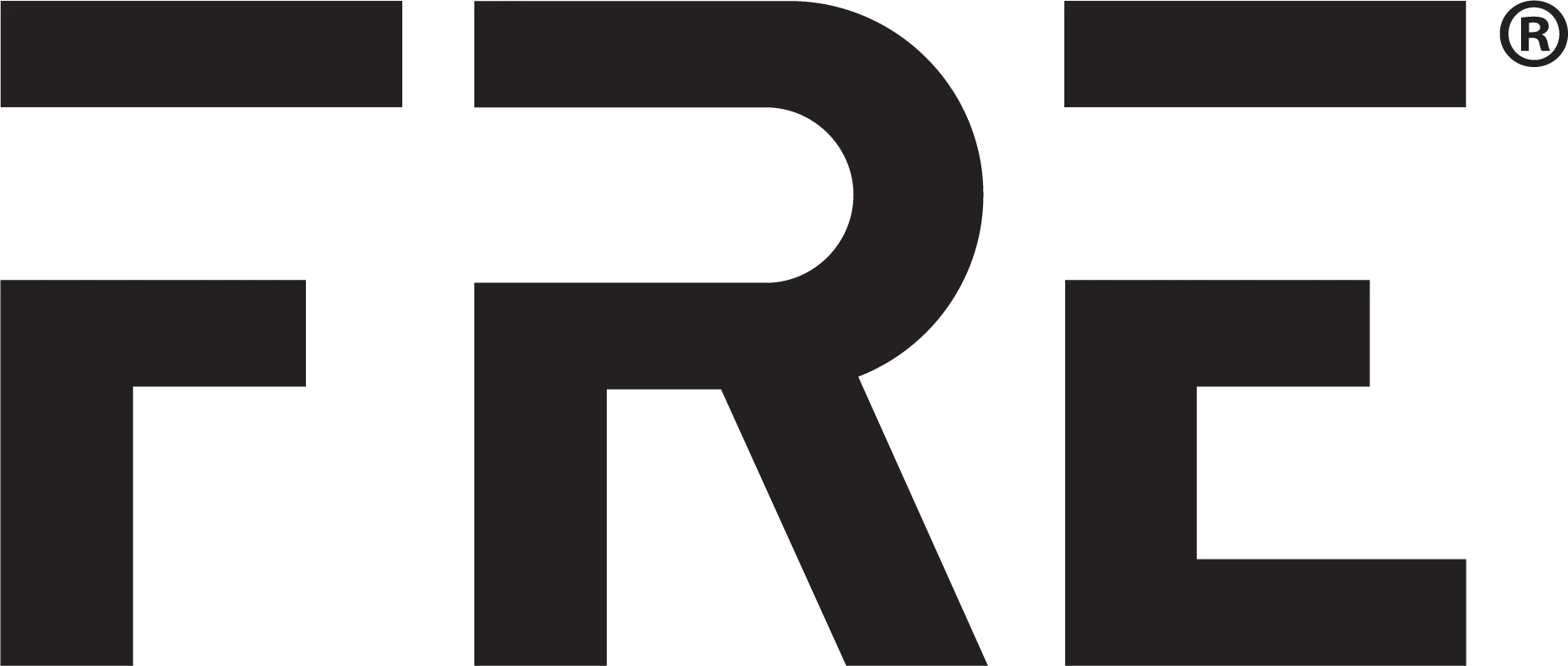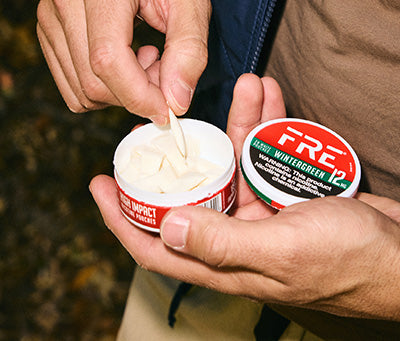Knowing how to start a fire in the wild is one of those skills you don’t realize you need until you actually need it. This guide covers the basics, from what materials to gather to how to get that flame going. We’ll also throw in a few solid tips that’ll help you get the job done right.
If you’re packing smart, don't forget the small comforts that can make your outdoor downtime better. We keep FRE nicotine pouches on hand, easy to carry, easy to enjoy. They don’t weigh you down, and they work with your pace, wherever you’re heading.
Quick Fire-Starting Takeaways
-
Know your materials: tinder, kindling, and fuelwood matter
-
Pick a fire-safe location that's clear of hazards
-
Use tried-and-true fire structures like teepees or log cabins
-
Always follow fire safety guidelines and local regulations
-
Bring tools that actually work (matches, lighters, or a ferro rod)
Why Should You Know How To Start A Fire In The Wild?
Starting a fire is one of the most practical skills you can bring with you on any outdoor trip. If you're spending a night outside or caught in rough weather, fire can make the difference between staying ready or struggling through it.
It helps you cook when you need to keep things simple. It gives you light when the sun dips early. It can even help keep animals from getting too close to your spot. Fires can dry out wet gear, boil water, and make long nights feel more manageable.
We always recommend being prepared with the right tools and mindset. That includes packing smart with items that help you stay stocked for longer trips. Our Original Mega Packs come loaded with 100 pouches, so you won't run out halfway through your weekend plans.
What Tools And Materials Do You Need To Start A Fire In The Wild?
Before you even think about striking a match, you’ve got to know what to bring. Starting a fire without the right setup can waste time and energy, especially if the weather turns or daylight’s running out. Packing smart makes everything easier.
Here’s what you should have:
|
Item |
Examples |
|
Tinder |
Dry grass, leaves, bark shavings |
|
Kindling |
Small sticks, pine needles, twigs |
|
Fuelwood |
Larger dry logs or thick branches |
|
Firestarter tools |
Matches, lighters, flint and steel |
Having these on hand can make a big difference, especially if you're deep in the woods or far from help. And if you're packing your day bag, don't forget the little things that keep you grounded.
We usually bring our FRE refill can to keep extra pouches fresh and in one spot. It’s compact, easy to carry, and fits right in with the rest of your essentials when you're packing for the wild.
Starting A Fire Visual Guide
You need three things for fire to happen:
-
Fuel (wood, twigs, dry leaves)
-
Heat (from your ignition method)
-
Oxygen (airflow from the surroundings)
If one of these is missing, your fire won’t last or won’t even start.
The Layering Technique
Stacking your materials in the right order makes a huge difference. Start small and work your way up. Always start with tinder at the base, then layer kindling on top, and finish with fuelwood once the flame is steady.
Wind Direction and Placement Tips
Set up your fire with wind in mind. A light breeze can help the flame spread, but too much wind will blow it out. Build your fire in a low-wind area or use rocks to block gusts. Make sure there’s airflow underneath to keep oxygen moving through your stack.
Step-by-Step Guide to Building a Fire in the Wild
Once you've got your materials and understand the basics, it's time to build:
Step 1: Select a Suitable Location
Start with where you're placing your fire. The right spot makes the entire process easier and safer.
-
Choose a dry, flat surface
-
Stay away from trees, bushes, or anything that could catch
-
Shield the area from wind using rocks or natural barriers
-
Use an existing fire ring if you find one
-
If not, clear at least a 10-foot circle to build safely
Step 2: Gather and Prepare Materials
Next, it's time to stock up. Having the right amount (and size) of wood makes lighting and maintaining your fire a lot easier.
-
Grab three times more wood than you think you'll need
-
Separate it into tinder, kindling, and fuelwood
-
Keep your tinder in a waterproof bag so it’s dry when needed
-
Break kindling into consistent pieces to help it catch quickly
This is also a good time to take a quick break. We like to keep FRE Mint or Sweet pouches in our bag. They’re simple to pack and easy to use while you're setting things up.
Step 3: Build the Fire Structure
The way you stack your materials changes how your fire lights and burns. Here are three basic structures that cover most outdoor situations:
Teepee Fire (great for quick ignition)
-
Place tinder in the center
-
Stack kindling over it in a cone shape
-
Light the base and let the fire rise
Log Cabin Fire (burns longer and steady)
-
Lay two pieces of fuelwood parallel
-
Stack kindling across the top like building blocks
-
Place tinder inside the square and light it up
Lean-to Fire (helps in wind or wet conditions)
-
Lay a thick stick flat as a base
-
Lean kindling against it over the tinder
-
Light the tinder underneath
Step 4: Igniting the Fire
You’ve got your structure, now let’s get it going. Different tools can get the job done depending on what you've packed.
-
Matches and lighters work well if conditions are dry
-
Ferro rods are a strong backup. They throw solid sparks and last a long time
-
Bow drills take effort but work if you’ve practiced them
Step 5: Maintain or Extinguish the Fire
Once your fire’s up, you’ll want to keep it going and shut it down properly when you're done.
-
Add wood slowly so the fire doesn't smother
-
Keep a bottle of water or a pile of dirt nearby
-
Let it burn down before calling it done
-
Stir the ashes, pour water, and stir again until it's cold to the touch
What Safety And Environmental Rules Should You Follow When Making A Fire?
Building a fire comes with responsibility as it can get out of hand fast if you're not paying attention.
Wind can shift quickly and carry embers into dry brush before you even notice. That’s why we always stay close to the fire and never leave it burning unattended. Burns, accidents, and wildfires are real risks if you're not careful.
Follow Local Regulations
Before you light anything, double-check local fire rules. Some areas have seasonal restrictions or full bans, especially in dry weather. These are there for a reason, and ignoring them can lead to serious consequences.
Stick to the rules posted at trailheads or campground entrances, and if you're in a national park, follow ranger guidance without skipping the fine print.
Fireproof Your Surroundings
Once you've picked your spot, make sure it's clear. Remove dry leaves, twigs, and anything that could catch around the fire pit. If there's a designated fire ring, use it. If not, build your fire on bare dirt or cleared ground. This helps keep things contained and makes cleanup way easier later.
Safe Fire Management
A massive flame might look cool, but it's harder to control. Keep your fire small and steady. That way, it's easier to manage and less likely to become a problem. And don’t walk away from it. If you’re heading out or even just taking a quick break, put it out.
Environmental Responsibility
Fires should leave no mark. Stick to using fallen, dead wood instead of chopping branches. Avoid overfeeding the fire or wasting fuel. Following Leave No Trace principles doesn’t just protect the land. It also helps make sure spots like this stay open for everyone else who wants to enjoy them.
Final Words
Knowing how to start a fire in the wild is a smart move that can make your time outside safer and more comfortable. With the right tools, a solid plan, and a little practice, you’ll be set for just about any trip.
And while you're packing up, don’t skip the simple things that make long days easier. Throw in a FRE nicotine pouch or keep your stash organized in the Refill Can. It’s one less thing to think about when you're out doing what you love.
Find FRE Pouches near you today! Stock up now and get outdoor-ready with your favorite pouch in hand. Or sign up for updates, tips, and product drops straight from FRE.





